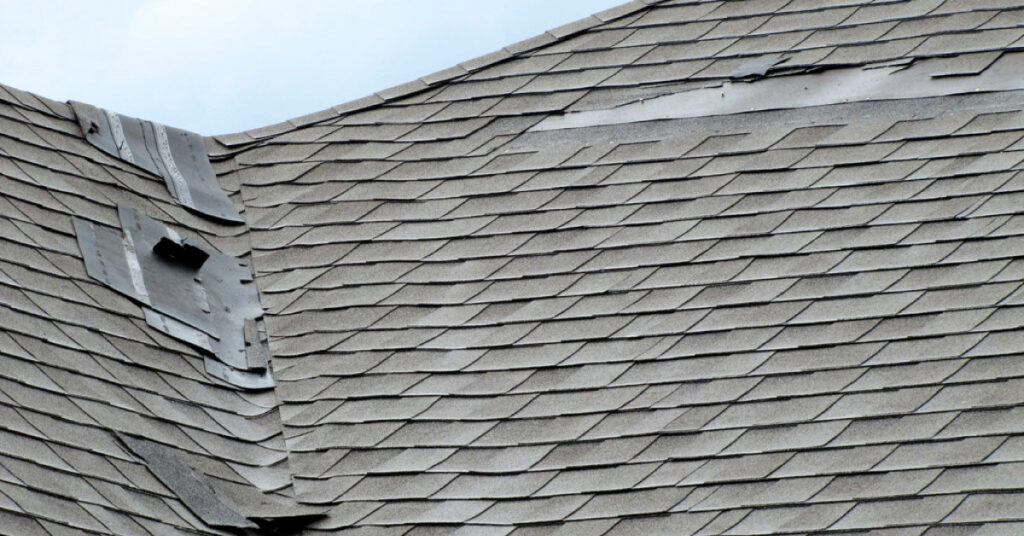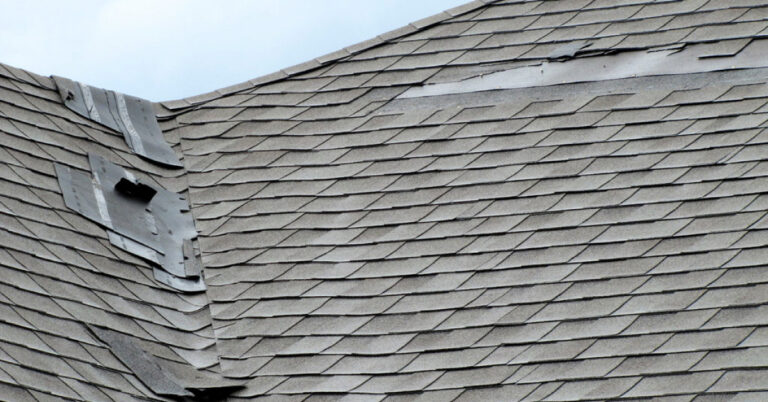
Quality roofing shingles are intended to protect your home’s roof. However, after even a minor hail storm, your once healthy roof can quickly deteriorate.
In certain parts of the United States where these types of storm are more commonplace, it’s important not only as a homeowner but as a contractor to be able to quickly repair any potential damage to your roof.
Even though most hail storms results in smaller pea-sized hail, that same storm can also produce anywhere from quarter inch to 4 inch size hail. And while it might seem that these storms move quite fast, their potential for damage to your home and roof can prove to results in an extensive list of long term issue.

How to Identify a Hail Damaged Roof
As soon as possible after a storm, one of the first things to do is to examine the perimeter of your home to look for any signs of hail damage. Things to be on the lookout for are new marks, dents or dings on things like:
- Mailbox
- AC Unit
- Windows
- Fence
- Driveway
- Automobiles
- Siding
- Garage Door
If you see any damage to any of the above, your next course of action should be to check your roof.
It’s important to note, however, that we do not recommend getting up on your roof yourself to assess any damage. It’s highly recommended that you instead consult a roofing professional who can properly assess any damage themselves and even recommend to you any possible solutions to prevent further damage to the roof or even the interior of your home.

Once it’s been determined that you might have hail damage to your roof, there are several things to look out for, including:
- Damaged Shingles and/or Roofing Materials, including:
- Bruised Shingles or Dark Spots on the Shingles
- Dimples
- Dents
- Cracking
- Splits
- Curling
- Chipping
- Loss of Granules in Roofing Asphalt
- Dents or Damage on Gutters or Leaf Guards
- Cracks, Dents, or Crooked Roof Vents or Chimney Covers
- Cracks or Dings in Skylights
- Dents in Flashing
An easy method to determine if your roof has bruises, dents or dings is to simply rub a piece of sidewalk chalk over the suspected area. The problem areas will be immediately noticeable using this method.
More often than not, if you do see these signs, it’s likely that other areas of the roof are damaged as well and will need closer inspection by a roofing professional.
Hail Damage Repair
To prevent any further damage to your roof from more hail, rain or snow, it’s extremely important to have your roof assessed by a professional and get it repaired as soon as possible. For instance, any weathering that occurs to your roof can lead to warping of the shingles that can be problematic with run-off water.
If water is not being funneled away with the roof shingles, this can lead to leakage through the shingles and into your roofing system, creating even bigger problems.
Most reputable licensed roofers can quickly inspect the roof to properly determine the extent of the damage. Assuming the roof was in reasonably good condition prior to the storm damage, smaller areas of damage can be quickly and easily repaired before it leads to larger problems down the road.
Most importantly, be sure to check your homeowners insurance policy to see what it covers in the event of any storm damage to your roof.

Shingle Granules
Once your roofing contractor has determined the extent of any damage, the next thing to start asking about is the lifespan of the entire roof. For instance, granule loss on shingles can lead to leaking, mold, and further water damage.
Roofing shingle granules are added to shingles for several reasons, including fire resistance, as a form of “sunscreen” from harmful UV rays, or simply as a design element.
There are many reasons these granules can wear off or chip away from the shingles, including:
- Hail Damage
- Everyday Wear and Tear
- Blistering Caused by Excessive Heat or Poor Ventilation in the Roof
- Walking on the Roof
- Simply a Defective Product

One easy way to check for granule loss is to check inside your ran gutters to look for granules.
Most importantly, when discussing the damage with your roofing contractor, be sure to ask if the damage is from the most recent storm or if its occurring due to any other reasons.


